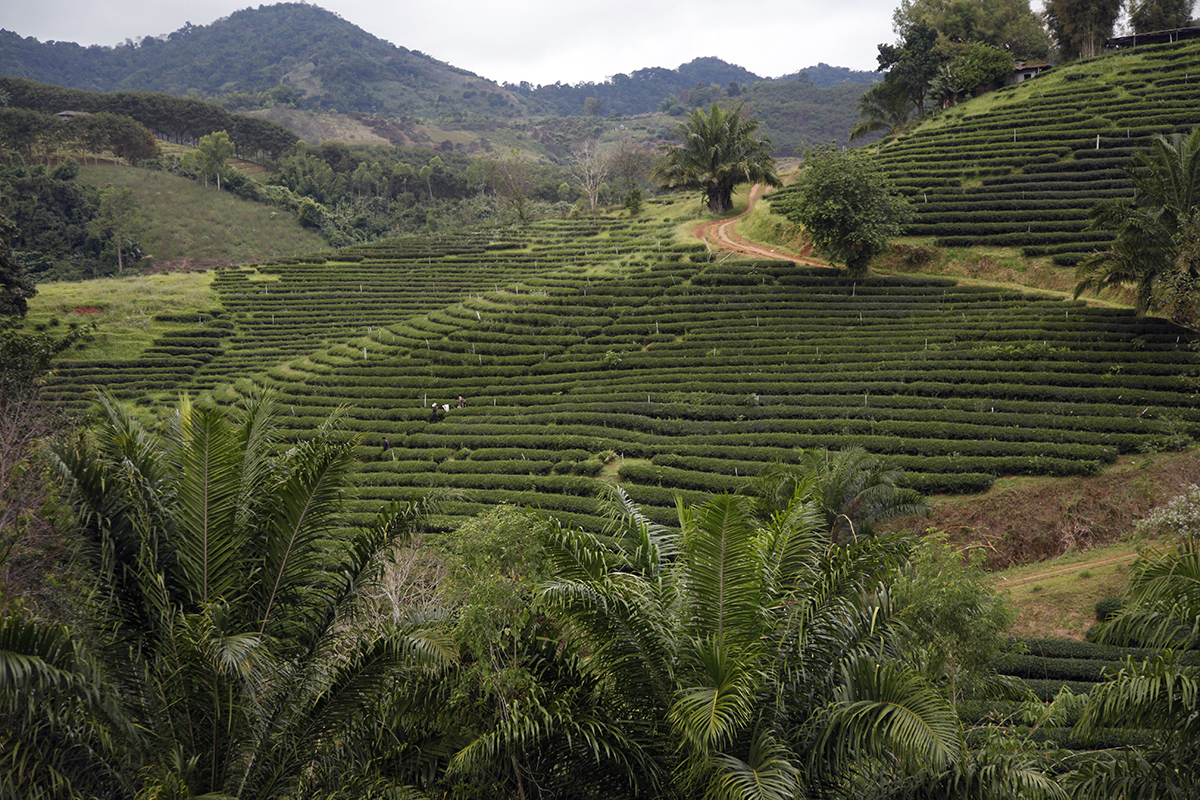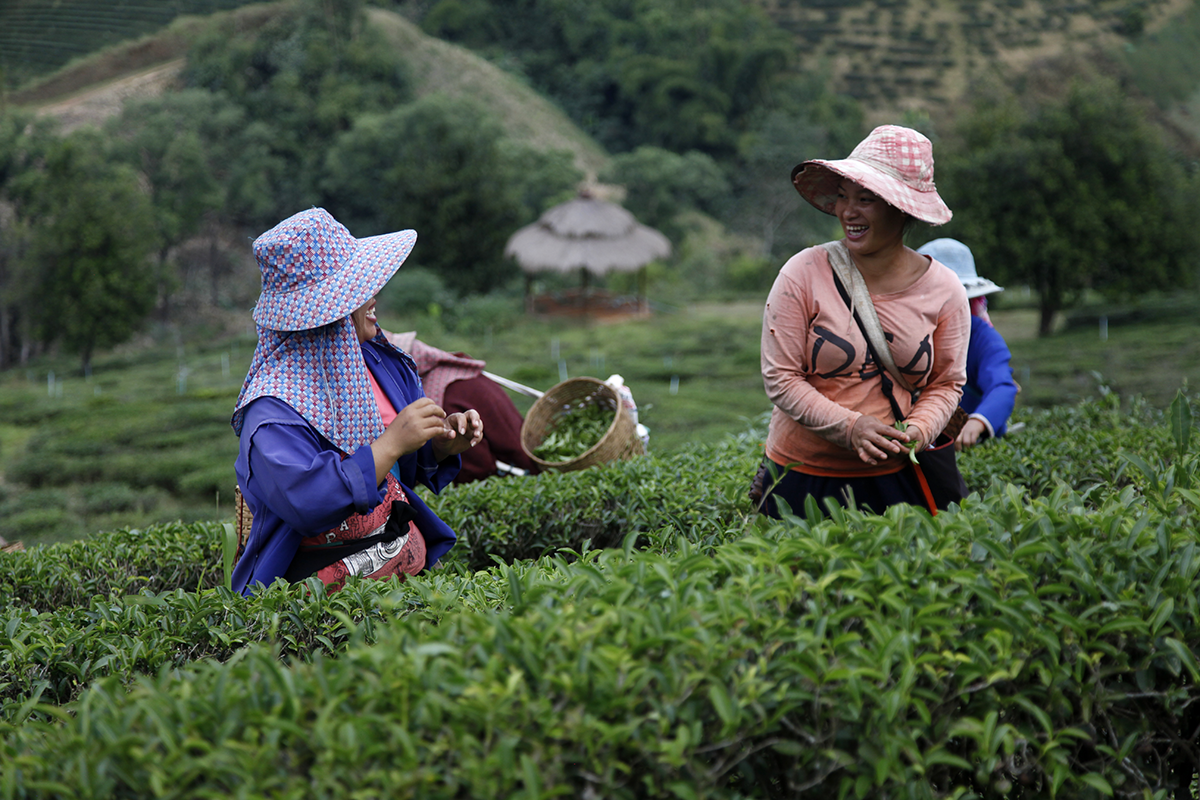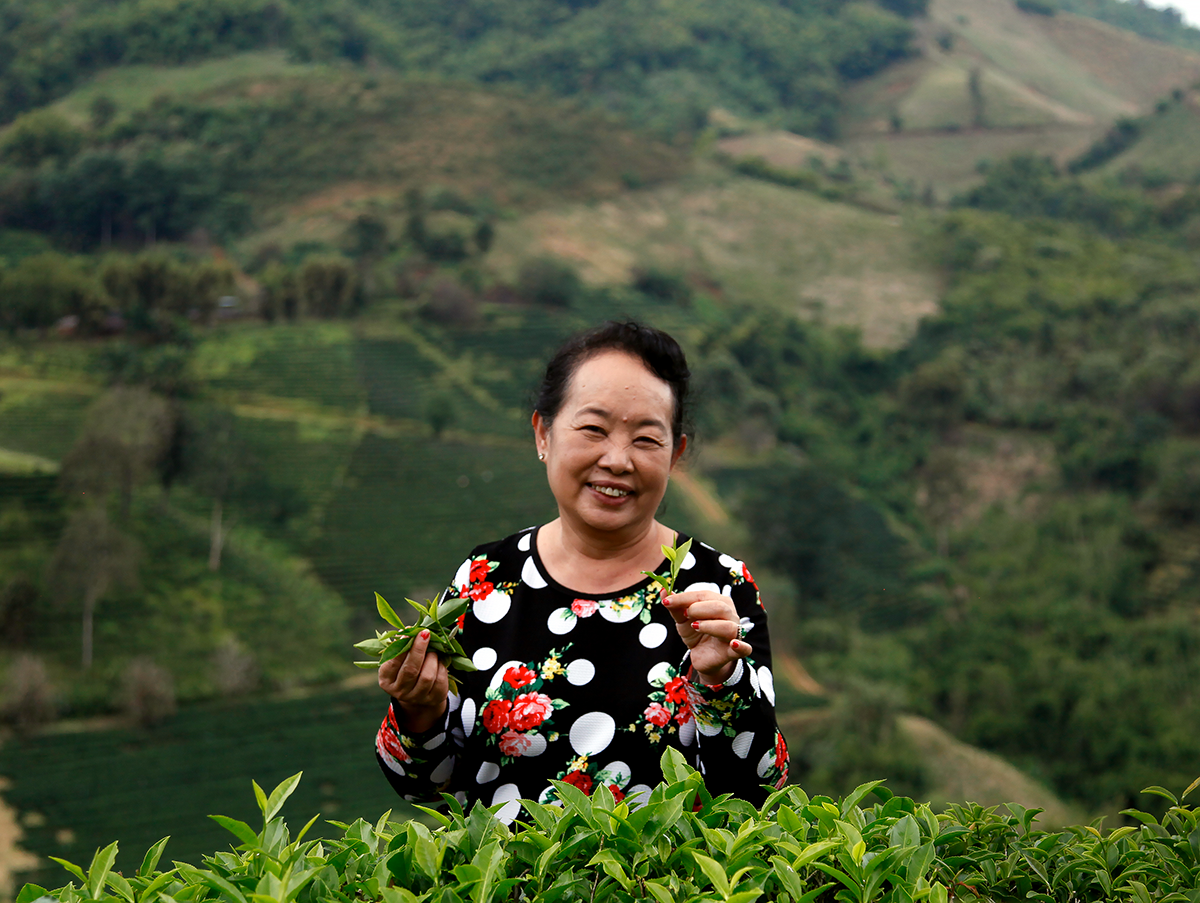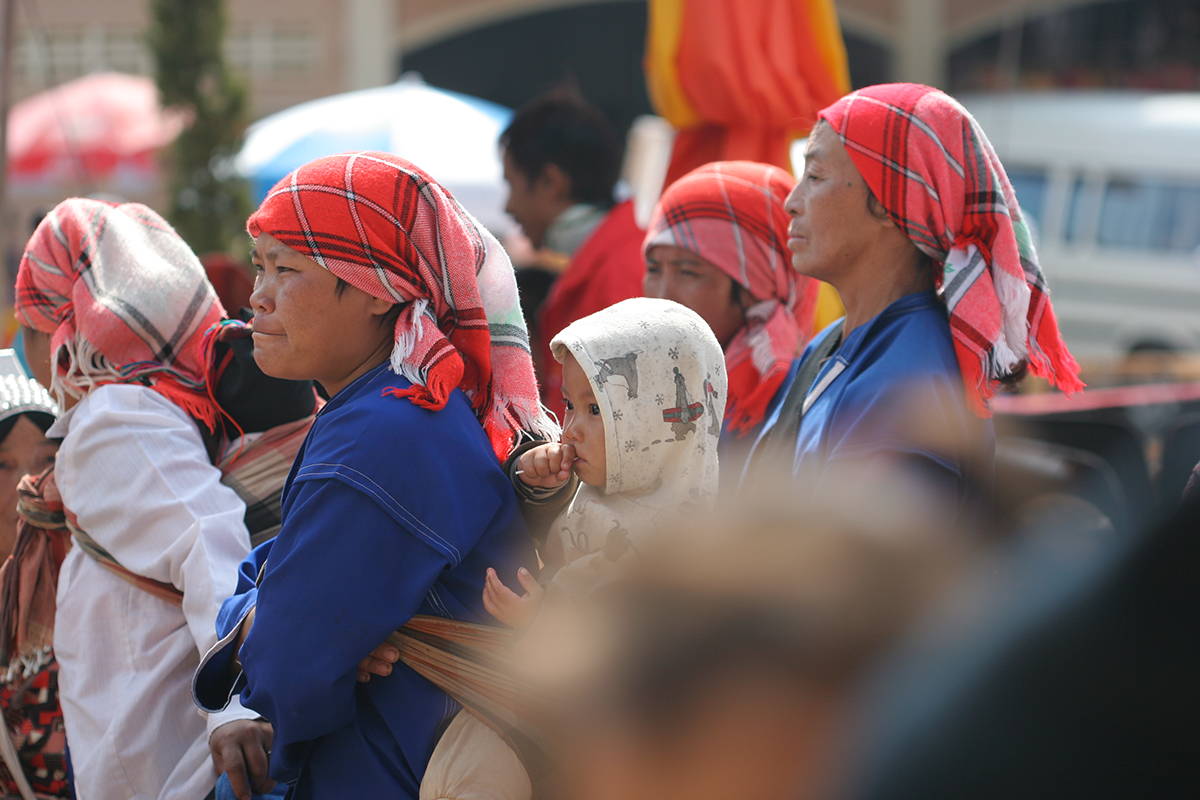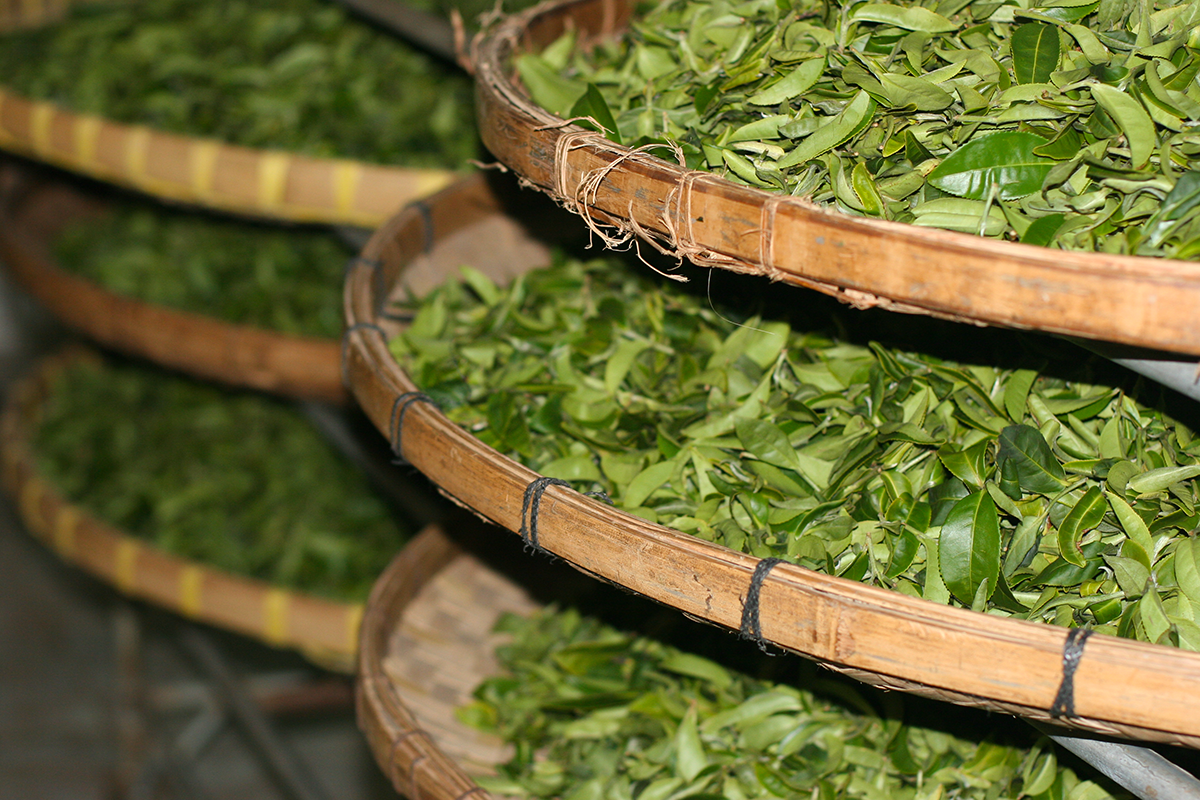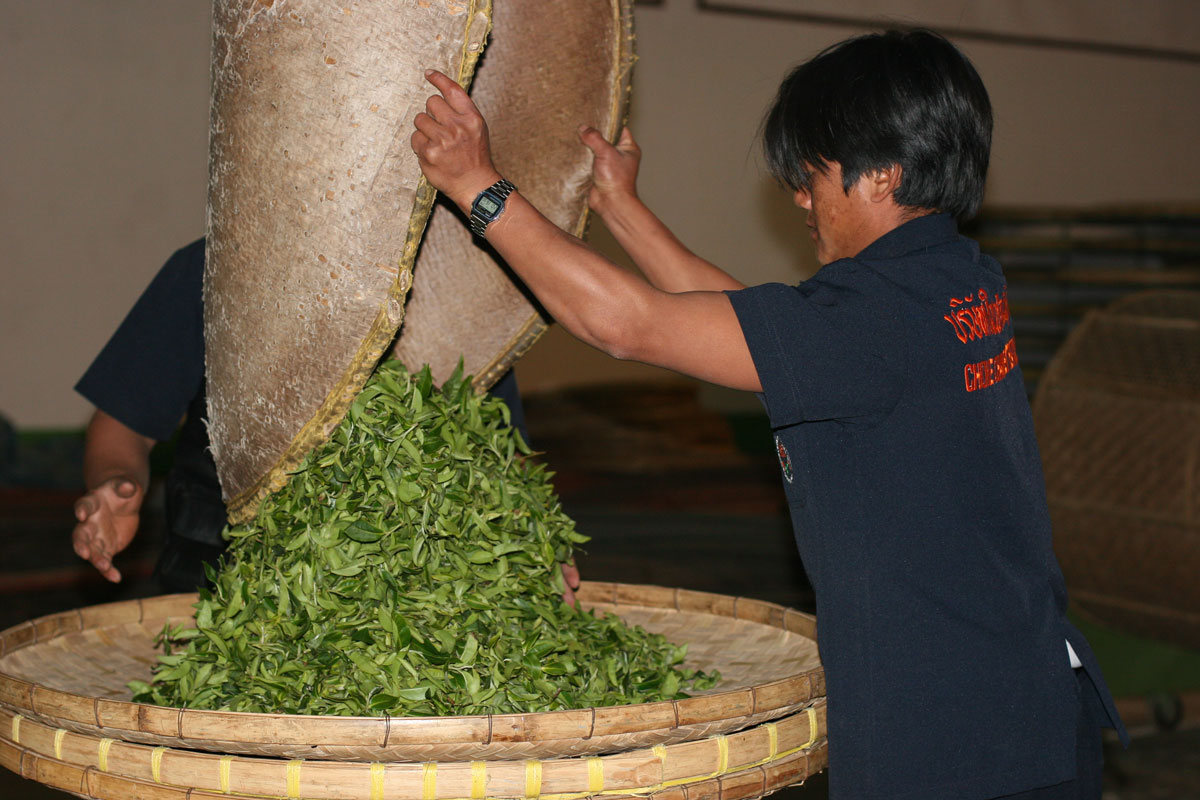You might think that the rules that define the colour of a tea are strict, but this isn’t always the case. Here in the Golden Triangle, the fashion is for Mao Cha, the tea that serves as a base for the various fermented teas known in this part of the world as Pu Erh. Some people let the Mao Cha wither overnight before fixing it with heat, rolling it, then leaving it in the sun for a day. Others, as soon as the leaves are picked, fire them in a wok for about ten minutes before rolling them by hand and leaving them to dry for five to six hours in the sun.
Thailand
Dara’s maocha
Travelling is about meeting people. Last week, I was very happy to meet Dara in the mountains of northern Thailand. Dara’s father, whose family comes from Yunnan (China), fled Kunming at the age of 15 accompanied by his younger brother, and came to the city of Pai. That was in 1938. He was escaping misery. He knew about tea. He felt the right feng shui in Fang and settled there. Dara is passionate about tea and makes a delicious maocha from leaves picked from old tea plants. Here, she’s posing with Mie, her friend with whom she shares her life.
Among the Karen people
It is not only in China and northern Vietnam that tea leaves are harvested from camellias that have grown tall. In the north of Thailand, a few kilometres from Myanmar, this woman, who belongs to the Karen ethnic group, picks young shoots from old tea bushes that are flourishing in the jungle. These will be used to make maocha, which is then turned into dark tea.
Travelling in images
Travelling around the world is not one of life’s essentials, even when you have a job like mine. Despite the world health crisis, we’re receiving samples of tea produced on the other side of the world by farmers we know. We taste them straight away in our tasting room and choose the ones we want. In other words, the world of a tea researcher continues on its course even during these times of Covid-19. It’s a strange world though, one that has stopped us from moving around. So, when we grow nostalgic for travel, for those wonderful landscapes, those mountains and changing skies, there is nothing to stop us, after all, from transporting ourselves through the power of the image. Here, we’re in northern Thailand, not far from the Golden Triangle.
The faces behind your favourite teas
When you prepare a cup of tea, you may find yourself wanting to know more about it. What sort of landscape did it grow in? Who are the people that grew and processed it? I hope to answer some of those questions in my blog! For fans of teas from northern Thailand (Milky Oolong, for example), here are the faces of the Mae Salong tea pluckers, hard at work harvesting the leaves.
Mrs Ming, an exceptional woman
In the world of tea, Mrs Ming is very unusual. There are very few woman in charge of a tea plantation. Not only does Mrs Ming produce some incredible Oolongs, she is also a pioneer, because she introduced tea to the area around Mae Salong. Since then, producing lightly oxidised teas in the Taiwanese style has become fashionable in this area of the Golden Triangle, on the border between Thailand and Myanmar.
I met Mrs Ming nearly ten years ago thanks to Augustin, one of my nephews who was travelling through these remote mountains on his motorbike. I’d asked him to let me know if he came across any tea plants.
Mrs Ming reserves her best teas for me – Jade Oolong, Ruby Oolong, Milky Oolong, Thai Beauty – along with that type of friendship that lasts a lifetime.
Daring and exacting, Mrs Ming never rests on her laurels. She experiments, innovates and tries out black and dark teas, with success. I have already chosen some, and soon you’ll be able to try them too.
As many different teas as there are ethnic groups
For the tea connoisseur, the “Golden Triangle” is a unique region. First, it is without doubt where tea was born, and that already counts for something. And these days, on those steep, inaccessible mountain slopes, there are as many different teas as there are ethnic groups. From southern Yunnan to eastern Myanmar, via northern Laos, Thailand and Vietnam, one encounters a great variety of traditional costumes and customs. People in this region produce white, black, green, blue-green or dark tea, depending on local tastes. Some are worthy of the name “premium” tea. And there are still many farms waiting to be discovered in these endless mountains shrouded in mist and legend. It’s a real treasure trove for a tea researcher seeking out new gems!
Time to sweat
Black teas are oxidised; green teas aren’t: that’s the difference. With oolongs, it’s more complicated. They can be oxidised a little, a lot, or zealously. Their oxidation rate can range from 10% to 70%. Of course, a lightly oxidised oolong will have a more vegetal aroma, while a more oxidised oolong will develop woody, fruity notes. Whatever the level of oxidation required, the processing steps are the same: withering, sweating, roasting, rolling, then drying. The sweating stage is essential. It involves alternating periods of stirring the leaves with periods of resting them, as illustrated by this photo. The aim of this stage is to encourage oxidation while removing the natural moisture from the leaves.
Teas steeped in history, in northern Thailand
A few weeks ago I came across a Jade Oolong from Thailand which I loved. It gives me the opportunity to tell you a bit about the village of Mae Salong in northern Thailand, and about its Chinese population and its unique and troubled history. During the 1950s, routed out by Mao Zedong, the nationalists of Kuomintang retreated to the island of Taiwan, apart from a few regiments based in Yunnan, who chose to organise their resistance from Burma (now Myanmar), aided by the CIA. Ten years later, tired of this threat on its border, China got Burma to chase out these regiments. Some soldiers decided to base themselves in Taiwan, others in Laos, and some in Mae Salong, just on the other side of the border, between Burma and Thailand. In the 1980s, Mae Salong’s Chinese people gave up the idea of returning to China one day, and following the eradication of poppy farming, switched to growing tea. Having brought their methods and expertise from Taiwan, as well the young plants, this is why we now find in the mountains of the Golden Triangle these delicious Oolongs, which have similarities with some Taiwanese Oolongs.

